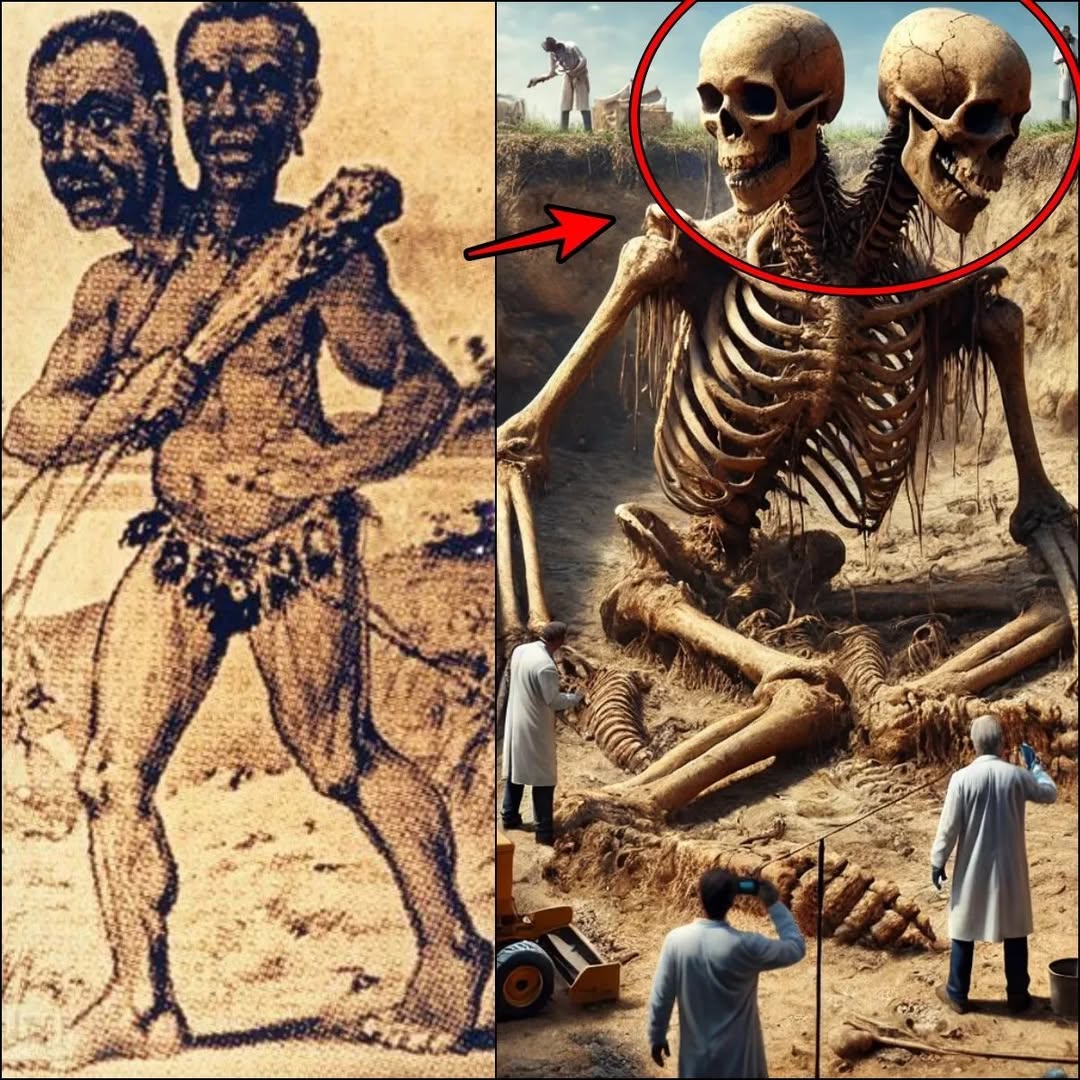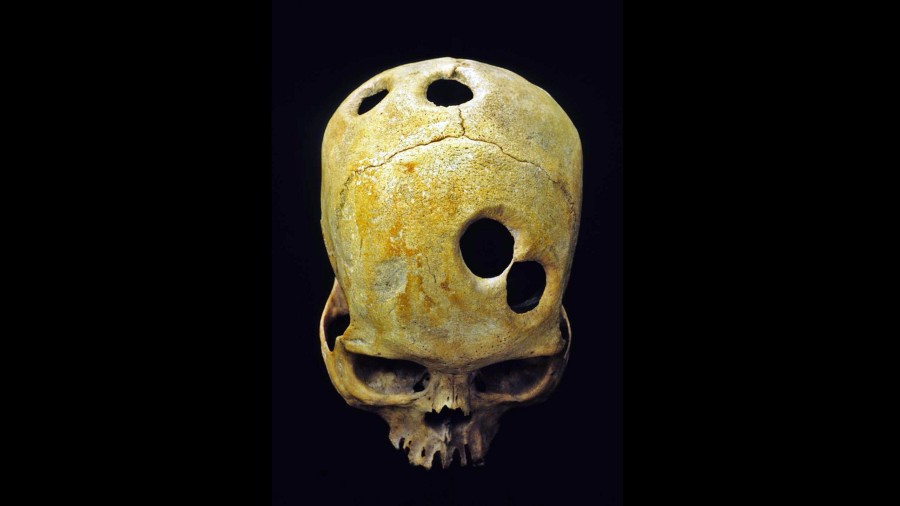
John Verano investigates ancient mysteries. As a forensic anthropologist, he’s examined skeletons and mummies throughout the Americas to unlock secrets about prehistoric human sacrifice, warfare, injury and disease.
Here’s one mystery he’s yet to solve: Why were four or five or even seven holes sometimes surgically cut into the skulls of Incan men and women while they were still alive?
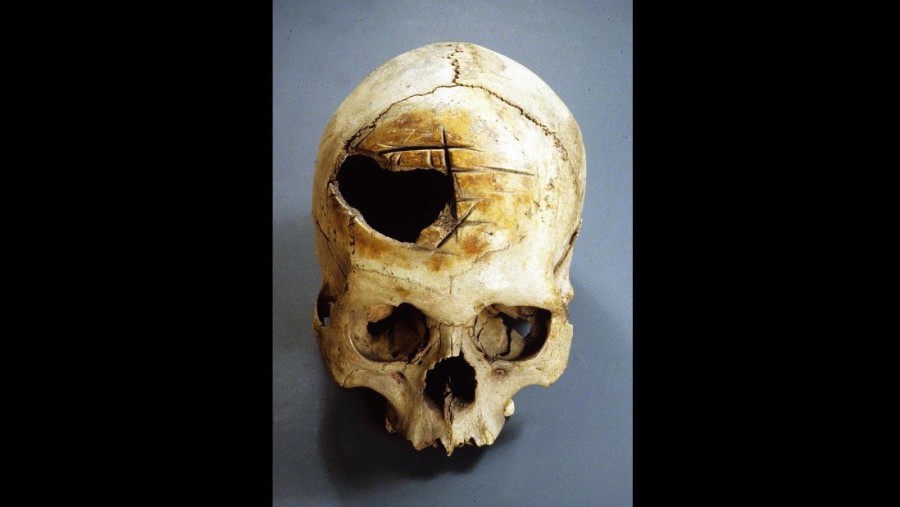
“They survived five or seven operations, so it’s pretty amazing,” Verano said. “I have to admit, we don’t know why they did it.”
A hundred years ago, the same Yale expedition that first publicized Machu Picchu ventured into a Peruvian burial cave and discovered a rare Incan skull. It contained five holes cut through layers and layers of healed bone.
The openings were perfectly circular and consistent in size.
Then, in 1936, an excavation at another Incan burial site turned up more mysterious skulls with multiple healed holes in them.
Scholars couldn’t explain the strange openings, and many of the skulls were buried again, but this time, it was in mothballs inside gigantic storage boxes.
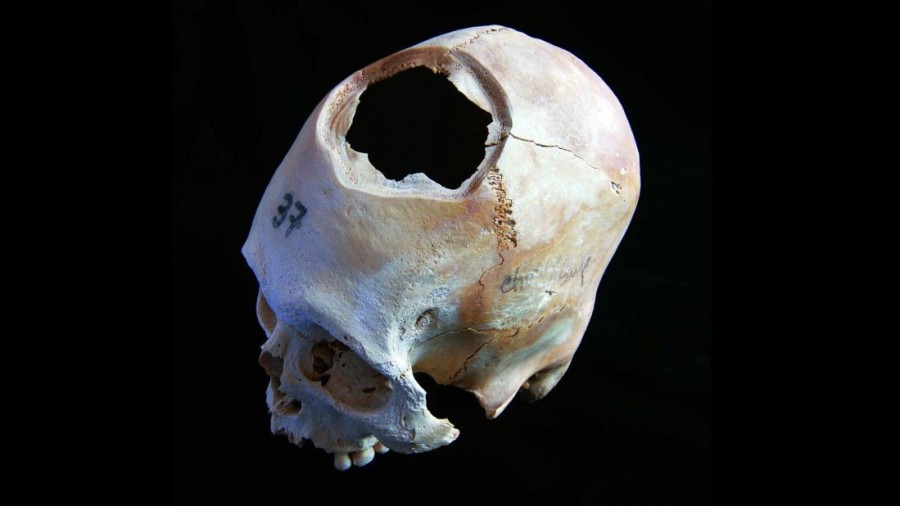
Verano got his first look at them in 2002, when he visited an unheated Cusco museum 11,000 feet high in the Andes. Freezing and battling the stench of mothballs, he and a colleague dug skull after skull out of boxes.
“I thought I was going to be poisoned to death. I thought I was going to die,” he jokingly recalled. “That was not my favorite museum, although the stuff in there was wonderful.”
Verano had come to locate, photograph and study prehistoric skulls with surgical holes in them. He examined 41 skulls with one hole and 21 with two or more. They would be a lot less mysterious if they just had the one, he explained.
Sling stones, clubs and lots of skull bashing
Sling stones and clubs fractured countless heads in ancient Peru. “It was a rough neighborhood,” Verano said. “People were getting hit all the time.”
After examining more than 800 Peruvian skulls with holes in them, he’s concluded the violence made the region a natural laboratory for primitive surgeons to invent ways to treat a head injury.
“There are many cases where there is a hole in the skull, and right next to it is a fracture line that’s extending out,” he said.
One man had the entire upper left side of his skull scraped away with a stone blade. The surgery was among the first of its kind performed in the Americas, about 2,400 years ago.
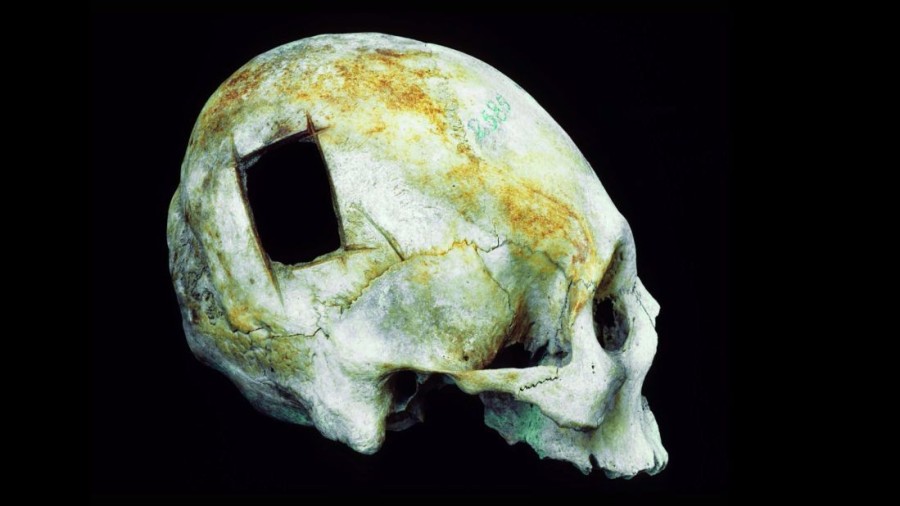
The gaping hole in his head would have created a window to the brain.
“Someone examining a patient like that could clean out the wound and then take a look. If there were fractures and broken pieces of bone, they could carefully remove those,” Verano said.
Based on skulls that show evidence of long-term bone healing, Verano said the oldest surgeries had about a 40% survival rate. Fewer than half the people made it.
Across the ocean, in the Europe, skull surgery had advanced to the use of metal probes and drills.
Hippocrates had written an entire treatise on the treatment of head wounds. But bone surgeons in what would be the New World were just getting started.
“Neither side knew what the other side was doing,” Verano said.
For the next 2,000 years, isolated from the rest of the world, prehistoric Andean surgeons scraped, cut or drilled holes into the head of injured patients to clean a wound, drain a blood clot or give the brain room to swell. The practice is called trepanation.
At a certain point in Inca times, 500 to 700 years ago, with more advanced and consistent techniques, they were able to reach survival rates pushing 80%.
“It was a very practical approach to head injury, and it worked,” Verano said. “It certainly was as good or better than neurosurgery was until very recent times.”
Trepanned skulls all but disappeared from Peru’s archaeological record when the Spanish invaded and conquered the Inca civilization, ending 20 centuries of traditional medicine.
Among the many reasons the hole-cutting ended were that the injuries changed. You don’t have to bash a skull to kill someone when you have a sword, a lance or a pike.
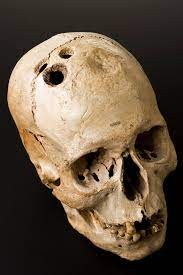
But personal injuries still don’t explain those bizarre skulls with multiple openings.
“I doubt that person was hit five times by a small object and each time they cleaned away a piece of bone, and each time he or she survived,” Verano said.
In 1987, Verano had been working in Peru for a long time. He didn’t like that two millennia of trepanation in the region were “a small little footnote” in medical history books, so he sat out to “properly” write it.
“I knew the chronology and the archaeology, and I knew I could pull it off,” Verano said. Over the course of the next 25 years, he cobbled together grants and scoured museums all over America and Peru, investigating the historical cliffhanger.
Now a professor of anthropology at Tulane University, he describes his “exotic adventure in examining skulls” in a new book, “Holes in the Head,” about ancient cranial surgery in Peru.
And although we now have a thorough account of the practice (where it was performed, when it appeared, how successful it was based on survival rates, what the best techniques were), the very same mystery that eluded scholars a century ago remains: What’s the deal with the those four- or five- or seven-holed skulls?
Some people have speculated it was for ritual purposes.
It’s possible, Verano said, but he doesn’t see any evidence. The holes don’t all appear in one place: for example, all on the top or all on the left. Instead, they appear inconsistently from skull to skull, in many different places.
Other people have speculated it was for expanded consciousness, perhaps rooted in an ancient theory that increased blood flow to the brain made a person more aware and intelligent.
But after 25 years of research and investigation, he does have his own theory.
“It’s possible that they were done to try to relieve headaches or dizziness,” Verano said.
Yup, that’s right: headaches. Maybe all those holes were just seriously extreme ancient aspirin.
Verano can only speculate, but he said head injuries probably produced unpleasant and sometimes painful long-term side effects. Perhaps Incan surgeons believed that just putting a hole in one particular place or another might give a returning patient with ongoing problems some relief.
Without medical records or eyewitness accounts, it’s impossible to say whether so many holes actually did the trick or whether Verano is even right about their true purpose.
“We may never know the answer,” he said.
